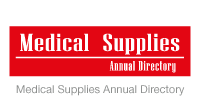Frost & Sullivan Healthcare Outlook 2014 Digest
Healthcare Outlook 2014: Analysis of Top Healthcare Trends & Providers
~ What’s what, Who’s who, and where it is all going…
The Keynote Speaker, Ms. Rhenu Bhuller, starts off in no uncertain terms that our healthcare spending per capita is one of the lowest in the region. Now, this baseline has deep as well as wide ranging implications, the chief of which is that Preventive Healthcare is still very low on the scales of public trust perception. Ours is indeed a treatment-focused market, accounting for our extremely low healthcare spending per capita.
Some key points from Ms. Rhenu address:
· Regulatory relaxations in deference to international regulatory standards clearances can help achieve faster-to-market results for medical care innovations which then accelerate their eventual transition to economic feasibility. The point is made to leverage on the industry standards already imposed on industry players, so that system wide application and availability of medical innovations – be it procedural, pharmaceutical, or device-based may be heightened.
· Healthcare operators especially in the public domain will redefine individual healthcare cost as a potential savings metric for improving systems efficiency in converting payment inputs to health outcomes.
· There will be more strategic segregation of the roles between government as a public provider and private healthcare companies as a segment provider for the more affluent - government’s role is to focus on the lower socio-economic rungs of society, i.e. those with lesser healthcare access due to economic or geographic factors.
· Case in point on options provided in the market is an Indian medical facility based in the Cayman Islands that provides high end medical services at below-market prices (US citizens being the target group) – this simultaneously opens up options for medical tourists seeking a lifestyle experience as part of their healthcare choice, as well as catering to those who simply seek more value for money in their healthcare expenditure.
· Focusing back onto the Asia Pacific region, this increasing spectrum of choice facilitates the emergent dual phenomena of people traveling for increased service levels in healthcare as well as those seeking higher economic sense for an equal level of medical care required.
· This will of course be impacted by the implementation of GST in many emerging economies in this region, though contrary to its corresponding level of concern, this is expected to have little impact on the rise of medical tourism – be it driven by one or the other of the mentioned focus affecting the patients’ decision making.
· In such a scenario, the insurance coverage model plays a significant role in mitigating the perceived setbacks of generally rising healthcare costs, as well as facilitating the adoption of the obvious benefits of private healthcare in particular. The governments in countries with upcoming GST implementation should offset this generally negative sentiment through governmental support and promotion of private healthcare insurance models and framework.
· With regards to ease of both economic access to and market provision of private healthcare - what obvious benefits are so apparent you ask? Well for any true national economic drivers to be successful – a close cooperative integration of public service delivery and private investment elements are needed. Innovations in Healthcare require both investments from the high-end market players, as well as broad-based adoption and uptake of these emerging technologies/formulations – the latter of which helps drive governmental adoption of said technologies into the public sphere, driving down costs, replacing high product profit margins in favour of market volume as the technology becomes a common factor, and finally ramping up pressures on companies to continue explorations for next frontier innovations.
Ms. Rhenu succinctly puts all of these implications in a simple and direct manner that quickly becomes apparent to the active listener.
· In the end, better outcomes of patient treatments collectively facilitated by all pertinent healthcare stakeholders benefit everyone – it is an arrangement in which everyone wins, chief of which is the general public who will likely recognize the benefit of being better informed in order to be positioned correctly in this shifting eco-system’s value chain.
· Practicality is the call word of the age, as new formulations need to be tailored to specific market feasibilities beyond the financial factor. Modes of delivery and correct application environments affected by people behaviour need be considered as well.
· The pressure on government and regulation authorities on the other hand would be to instil confidence via systemic transparency that increases both investors’ confidence at the apex, as well as public buy-in at the pyramidal base.
· In the middle, healthcare companies will need to choose the segment in which they play – as the incessant disparity between the haves and the have-nots continue to define the level of healthcare received by these 2 societal segments.
· Many governments will require a more stringent evaluation of products and services that complement the increasing level of budget justification held by healthcare operators as well as supported by the widening consumer choice of the man on the street.
· ROI will no longer be off-the-brochure nor will it be just in-ledger – tangible value to operational efficiency and concrete systems outcomes will be utmost.
· For example, take telemedicine – this new procedural paradigm is as much dependent on new media/transmission technology as it is dependent on consumer behaviour which presupposes a high level of trust and communications effectiveness between the patient and the practitioner in remote locations. Costs can become higher if ineffective communications lead to channel hogging or worse, misdiagnosis.
· On the topic of supply chain reengineering, large healthcare entities can leverage their financial capability on greater economies of scale, thanks to the smart bulk bundling of managed healthcare purchases, the benefit of which can be transferred in part to patients to encourage a greater customer base and increase access especially to private healthcare.
The goal is always to organically free up the public healthcare delivery system for those who really need it – whether they are constrained economically or geographically.
· As healthcare users are increasingly viewed as consumers versus the old mind set of patients, the new healthcare consumer is not just “entitled” to all the entailing benefits of this increasingly democratic and innovative healthcare model – the new consumer will have to start taking more accountability for their choices and that means taking steps to be educated so as to correctly position oneself in this model.
· Hence, we see the ”patient-centric model” of healthcare delivery which dictates that physicians share the responsibility with the patient in making mutually informed healthcare choices. This redefined role of both patient and physician will justify the emerging “patient-centric model” that puts “commercial” choice back into the patient’s hands.
· Not only does the individual patient need to take charge of their own personal health information, so do hospitals need a practical way to make sense of global-view data on all their patients. Big data is correctly cited by the Keynote Speaker as both a potential cost as well as an asset to the operator – the latter only happens if the outcome parameters of patient data usage encourage the patient/consumer to make smart decisions in their interactions and transactions with the operator, facilitated by the physicians.
· Marketing and branding is rightly mentioned as a crucial factor influencing patient choice – moving away from traditionally held folk wisdom (which prohibits proper modern healthcare) and localized community recognition of particular physicians (which tends toward a more scattered and impermanent healthcare subscription, further complicating the consolidation of patient data and mass delivery of reinvented healthcare elements).
· Eventually, as patients gain greater autonomy in their use of personal health knowledge, as well as their choice of healthcare provider – the system will no longer be defined or differentiated primarily by products (as distribution models of valid products improve) and physicians (as credible new talent gravitates towards preeminent public/private establishments to build their careers) but rather on the organizational provider that promises to offer the best combination of quality, hospitality, and delivery systems efficiency coupled with a sense of economic scale that presupposes the best value for one’s money.
· Following this rising trend of universal subscription to a healthcare entity, corporate commercial organizations are increasingly looking to diversify their commercial base into actual healthcare delivery as a viable business arm, rather than just as an auxiliary stakeholder in the wider healthcare eco-system. This is expected to further broaden the industry landscape, increasing consumer choice as well as deepening the value proposition to patients.
· Coming full circle, perhaps the most important trend to foster in the coming year and perhaps in the coming decade is to reward and encourage a preventive healthcare mentality across all segments of population (not just among those on the higher rungs of the socio-economic ladder). This will ultimately ease the burden of primary treatment-focused delivery systems in the existing public healthcare infrastructure and on the other hand, implicitly enabling a larger segment of society to pursue the higher economic capabilities that allow them access not just to better treatment, but alas to better maintenance of their long term wellbeing.
· The obvious benefit strategy then for governments ultimately will be the placement of more incentive measures to be put in place for a wellness culture in lieu of fire-fighting lifestyle disease and epidemic-centred occurrences that encumber the overall system, and which takes away the human resource capability to build more competitive and innovative nations on the global stage.
As an end note; let it be said that a universal adherence to wellness is a universal buy-in to maintenance. If we have been focused on the theme of value proposition to the people, then the flip side is definitely the bottom-line deal-closing profit propositions for the top healthcare players as they are presented in this briefing – provided that one embraces the subtle paradigm shifts implicit to the Healthcare Outlook, as projected by Frost & Sullivan for the year 2014.
~ From Corporate 21 Editorial
More From C21 Editorial
Technology Trends Essay, Derived from Healthcare Outlook 2014
Paraphrasing Ms. Natasha Gulati, Snr. Industry Analyst of Healthcare for the APAC region, targeted innovations will define the future of medical technologies - simply put, innovation trends that are geared towards solving an existing problem rather than for-its-own-sake innovations that organically stem from first principle advancements.
Watch Videos
Asia's Leading Media Organization For The Building And Construction Industry
Our Media Coverage
- APHM Conference and Exhibition 2015
- Indo BuildTech Jakarta 2015
- 18th SE-Asian Healthcare Show 2015
- METALTECH 2015
- OneBuild@JB 2015
- APAC Tunnels and Bridges Conference 2015
- 18th SE-Asian Healthcare Show 2015
- Nadi 7th Diabetes Complications Conference & Grand Rounds 2015
- BuildTech 2014
- Medical Fair Asia 2014
- Waterloss Asia 2014
- Transborneo Wound Conference 2014
- OneBuild 2014
- Archidex 2014 & ECO-B
- Asean M&E 2014
- APHM International Healthcare Conference & Exhibition 2014
- NADI - Diabetes Complications Conference & Grand Rounds 2014
- idsMED Healthcare Forum 2014
- Frost & Sullivan - GIL Malaysia & MYEA 2014
- Airport Cities 2014
- Infrastructure Malaysia Introductory Video
- Hospital Efficiency and Quality Asia Summit 2014
- AsiaWater 2014
- 17th SE-Asian Healthcare & Pharma Show 2014
- Frost & Sullivan 2014 Healthcare Outlook
- Diabetes Asia 2013
- BioMalaysia & Bioeconomy Asia Pacific 2013 Conference & Exhibition
- LabAsia 2013
- Medical Fair Thailand 2013
- APHM International Conference and Exhibition 2013










